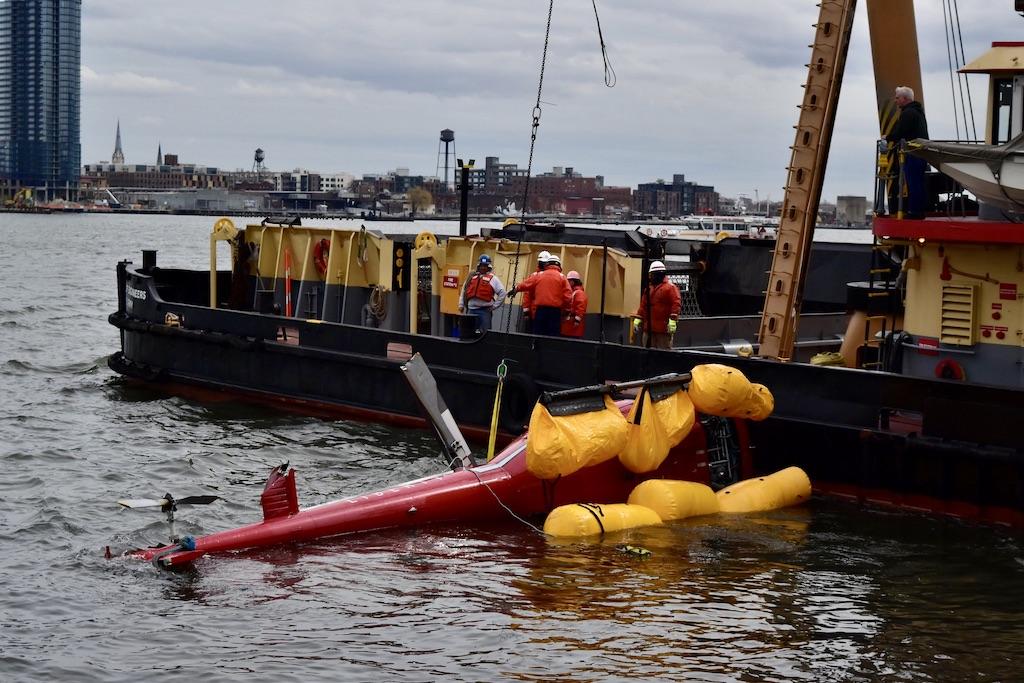High-Profile Crashes Are A Setback For Urban Helicopter Operations, Part 1

On March 11, 2018, the pilot of a Liberty Helicopters AS350-B2 ditched the helicopter in the East River in New York City. The pilot was able to escape, but his five passengers died.
Each time a helicopter operating in an urban setting experiences an accident, we are reminded of the considerable risk of flight operations over congested settings. Regretfully, when subsequent investigations determine pervasive safety shortcomings in the management and safety oversight of the helicopter operator, the public’s perception of the industry’s safety and professionalism are subjected to the equivalent of yet another black eye.
New York City news stations captured live video of the rescue attempt underway on March 11, 2018, when a single-engine Liberty Helicopters Airbus AS350 B2 suffered a loss of engine power, made an emergency landing to the East River and then overturned in the water. FlyNYON, which operated the sightseeing flights with the doors removed, had an extensive social media presence showing passengers taking “adventuresome” risks to get selfies, including sitting in the door sill.
After the emergency touchdown in the water, the pilot, who was using the aircraft’s normal seatbelt and shoulder-harness system, was able to escape. The inexperienced passengers were wearing supplemental fall protection harnesses and tethered to the helicopter via locking carabiners at an inaccessible attachment point between their shoulders.
Unable to free themselves, they had to be cut out of the aircraft by police and fire divers. Tragically, two passengers died on scene and three others were pronounced dead later in the hospital. Shortly after the accident, it was revealed that Liberty pilots who flew charter flights for FlyNYON had voiced safety concerns about the yellow harnesses worn by passengers, which were designed for construction work, not aviation operations.
The 146-page NTSB investigative report into the accident is a page-turning litany that gives helicopter opponents abundant documentation to distrust operators. The board’s then-chairman, Robert Sumwalt, as well as the other members in attendance at the public hearing, voiced scathing criticism for deficient safety cultures at Liberty and FlyNYON. They cited a lack of safety management systems at both organizations, a misleading FlyNYON passenger safety video that mischaracterized the harnesses as quick release devices equipped with cutting tools, safety meetings held without pilots and a disregard for pilot safety concerns.
Not In My Backyard
Barely a year later, another helicopter mishap in New York City revealed how an accident involving just one occupant can immediately be catapulted into the national spotlight, even bringing tweets from then-President Donald Trump in response to the accident.
An Agusta A109E crashed into the Axa Equitable Center on Seventh Avenue in Manhattan on June 10, 2019, igniting a fire on top of the building. A photo by the New York City Fire Department showed firefighters on the roof amid the scorched wreckage after extinguishing the blaze. Only a small portion of the helicopter, possibly part of the tail section, appeared to be intact. The damage to the upper level of the building was considerable. Hundreds of people who worked in the building were forced to evacuate. Seventh Avenue was closed to traffic, and police advised people to avoid the area.
“If you’re a New Yorker you have a level of PTSD from 9/11 ... so as soon as you hear an aircraft hit a building, I think my mind goes where every New Yorker’s mind goes,” said New York’s then-governor, Andrew Cuomo, trying to calm public fear. “But there’s no indication that that is the case.”
New York City Mayor Bill de Blasio also stressed that it appeared the fire was an accident. A newspaper headline the next day read: “Deadly Manhattan rooftop helicopter crash raises safety questions about choppers in the city.” Shortly afterward, de Blasio called for a ban on non-emergency helicopters flying over Manhattan.
The two accidents provide ample reason for a “Not In My Backyard” stance by neighborhood associations, and their representatives in Congress have listened. Immediately after the Manhattan crash, former U.S. Rep. Carolyn Maloney (D-New York), who represented a large swath of midtown Manhattan, renewed calls for a ban on “non-essential” helicopters over city.
“Today, New York City experienced yet another deadly helicopter crash—this time, with our nightmare of having a helicopter crash into a building,” Maloney said in a statement. “We cannot rely on good fortune to protect people on the ground. It is past time for the FAA to ban unnecessary helicopters from the skies over our densely packed urban city. The risks to New Yorkers are just too high.”
In Part 2 of this series, we will revisit the fallout from a fatal helicopter crash along the River Thames in London.





